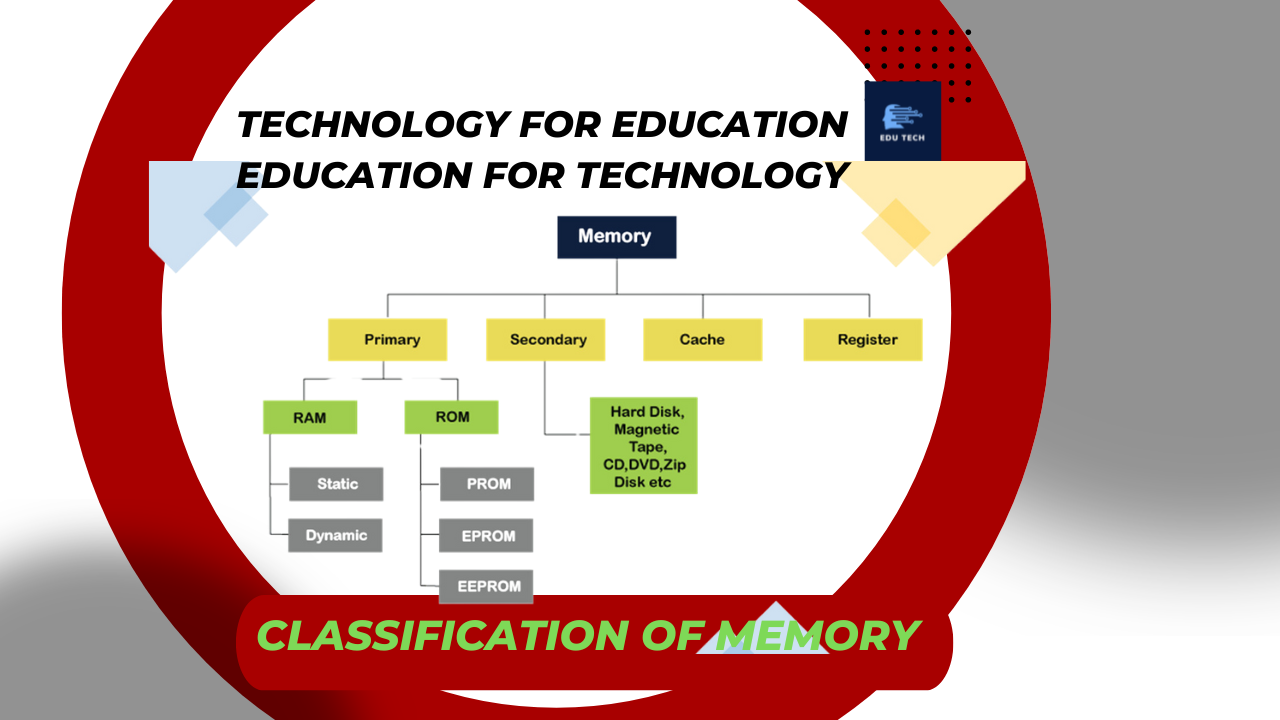- Primary memory is also known as the computer system’s main memory that communicates directly within the CPU, Auxiliary memory and the Cache memory.
- Main memory is used to kept programs or data when the processor wants to use them.
- When a program or data is ready to execute, the processor first loads instructions or programs from secondary memory into main memory.
- Then the processor starts execution.
- Accessing or executing of data from primary memory is faster because it has a cache or register memory that provides faster response.
- It is located closer to the CPU.
- The primary memory is volatile, which means the data in memory can be lost if it is not saved when a power failure occurs.
- It is costlier than secondary memory, and the main memory capacity is limited as compared to secondary memory.
The primary memory is further divided into two parts:
- RAM (Random Access Memory)
- ROM (Read Only Memory)
Random Access Memory (RAM)
- Random Access Memory (RAM) is one of the faster types of main memory accessed directly by the CPU.
- It is the hardware in a computer device to temporarily store data, programs or program results.
- It is used to read/write data in memory until the machine is working.
- It is volatile, which means if a power failure occurs or the computer is turned off, the information stored in RAM will be lost.
- All data stored in computer memory can be read or accessed randomly at any time.
- There are two types of RAM:
SRAM and DRAM
- DRAM: DRAM (Dynamic Random-Access Memory) is a type of RAM that is used for the dynamic storage of data in RAM.
- In DRAM, each cell carries one-bit information.
- The cell is made up of two parts: a capacitor and a transistor.
- The size of the capacitor and the transistor is so small, requiring millions of them to store on a single chip.
- A DRAM chip can hold more data than an SRAM chip of the same size.
- However, the capacitor needs to be continuously refreshed to retain information because DRAM is volatile. If the power is switched off, the data store in memory is lost.
Characteristics of DRAM
- It requires continuously refreshed to retain the data.
- It is slower than SRAM
- It holds a large amount of data
- It is the combination of capacitor and transistor
- It is less expensive as compared to SRAM
- 6. Less power consumption
SRAM: SRMA (Static Random-Access Memory) is a type of RAM used to store static data in the memory.
- It means to store data in SRAM remains active as long as the computer system has a power supply.
- However, data is lost in SRAM when power failures have occurred.
Characteristics of Static Ram
1. It does not require to refresh.
2. It is faster than DRAM
3. It is expensive.
4. High power consumption
5. Longer life
6. Large size
7. Uses as a cache memory

Advantages of RAM
- It is a faster type of memory in a computer.
- It requires less power to operate.
- Program loads much faster.
- More RAM increases the performance of a system and can multitask.
- Perform read and write operations.
- The processor can read information faster than a hard disc, floppy, USB, etc.
Disadvantages of RAM
- Less RAM reduces the speed and performance of a computer.
- Due to volatile, it requires electricity to preserve the data.
- It is expensive than ROM.
- It is unreliable as compared to ROM.
- The Size of RAM is limited.















